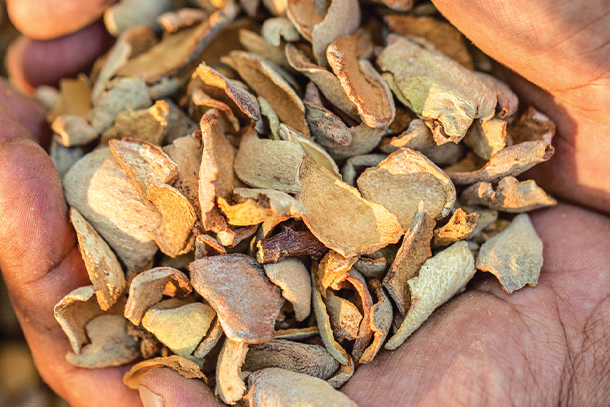The almond kernel is only one third of what comes out of an almond orchard each year, yet the other two thirds of coproducts generate only 3% of the revenue from that orchard. In the next few months, the Almond Board of California’s (ABC) Biomass Working Group and the Board of Directors will be looking at the results of a commercial biomass market assessment to decide on a first group of market opportunities to further explore and map the path forward to develop those markets.
Declining value, a growing problem
For the grower, the decline in value for almond hulls, shells and woody biomass means paying more for hulling and shelling than a decade ago. With projected coproduct biomass estimated to be as much as 2.4 million tons of hulls, 900 million tons of shells and 1.5 million tons of wood per year by 2025, that large volume either represents new revenue opportunities, a market differentiator for almonds as a zero-waste industry, or a waste challenge.
Investing in the issue
Aiming to achieve the first two – positive opportunities for the industry – is the rationale for the $2 million the Almond Board has invested over the last five years in biomass research projects, guided by industry volunteers who serve on the Biomass Working Group, now under the Strategic Ag Innovation Committee. That investment in research has explored expanded use of almond hulls as animal feed, use of torrefied almond shells to strengthen plastics, extraction of food-grade ingredients from almond hulls, and other applications.
Some of that research has already moved into commercial application. Whole orchard recycling (WOR) has proven a win-win for growers and for sharing our climate smart story. Research shows that WOR can increase yields by 19% and water use efficiency by 20%, as well as sequester 5 tons of carbon per hectare. And there are now three sources of incentives available to growers to help offset some of the costs – from the San Joaquin Air Quality District, CDFA’s Healthy Soils Program, and USDA/NRCS. Several companies are also engineering second-generation biofuels from almond shells and two companies – North State Hulling and Shelling and Corigin – are focusing on producing biochar compost and soil amendments. The former is in the process of building a new biochar facility and the latter is now producing product at a commercial scale.
Guiding the research results
With literal mountains of hulls and shells, raising the value of these coproducts for the industry will require developing multiple new markets that take advantage of the concentrated volume of this new feedstock or create significant new high value uses beyond the dairy industry. On the path to developing those markets, the almond industry investment will need to demonstrate the suitability and competitiveness of almond coproducts over other feedstocks: competition on quality, price or supply logistics. That will require educating a diverse group of industries – such as industrial absorbents, phytonutrient ingredients used in food products, pulp thermoformed containers and activated carbon filters – producing demonstration prototypes and enticing commercial investors from venture capital to established Consumer Packaged Good brands.
ABC and the Biomass Working Group invite industry members to be part of the conversation. The Biomass Working Group meetings will be scheduled in October and November and listed online. Interested parties are also encouraged to register for The Almond Conference and join the biomass session on Thursday, December 9.

